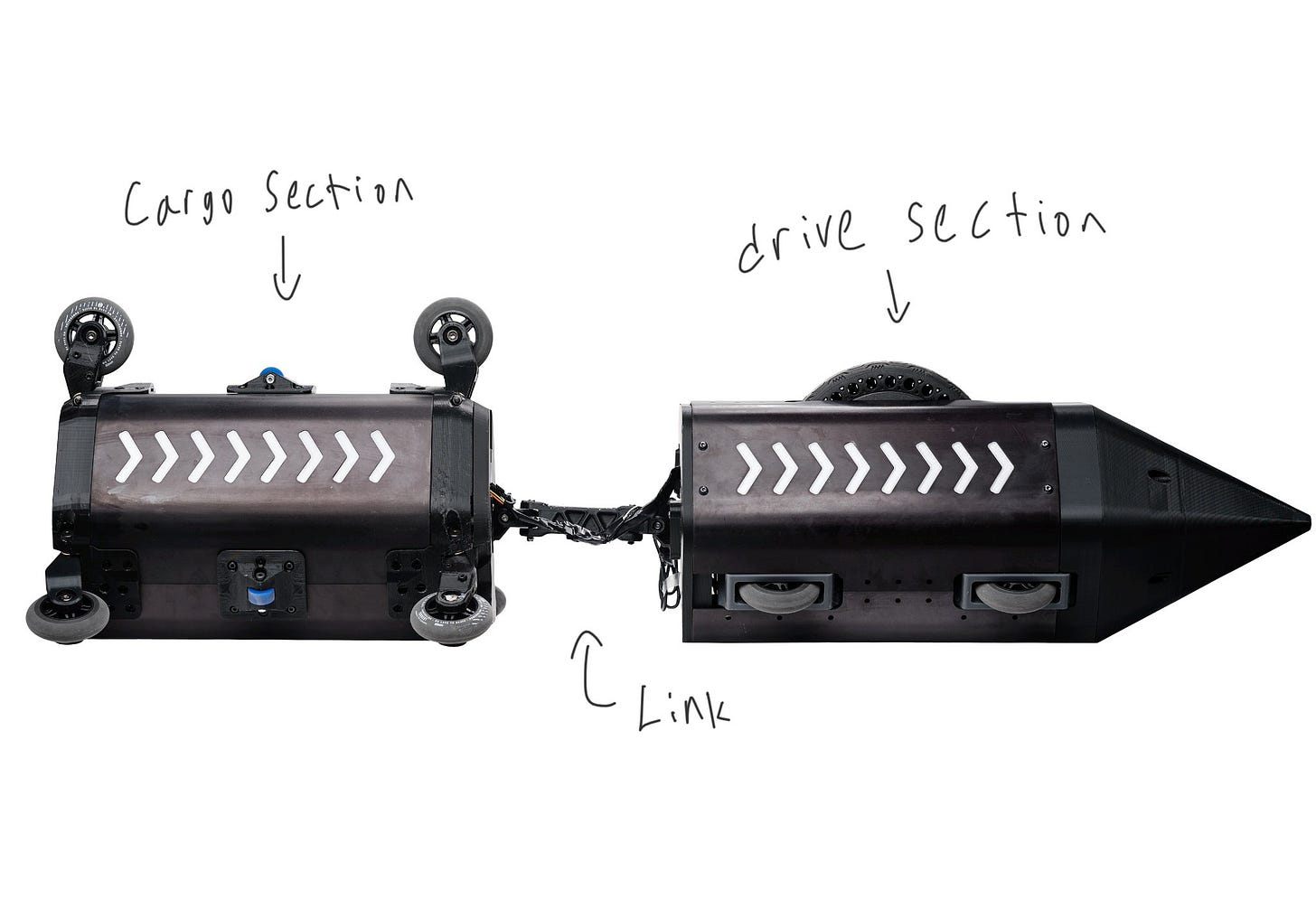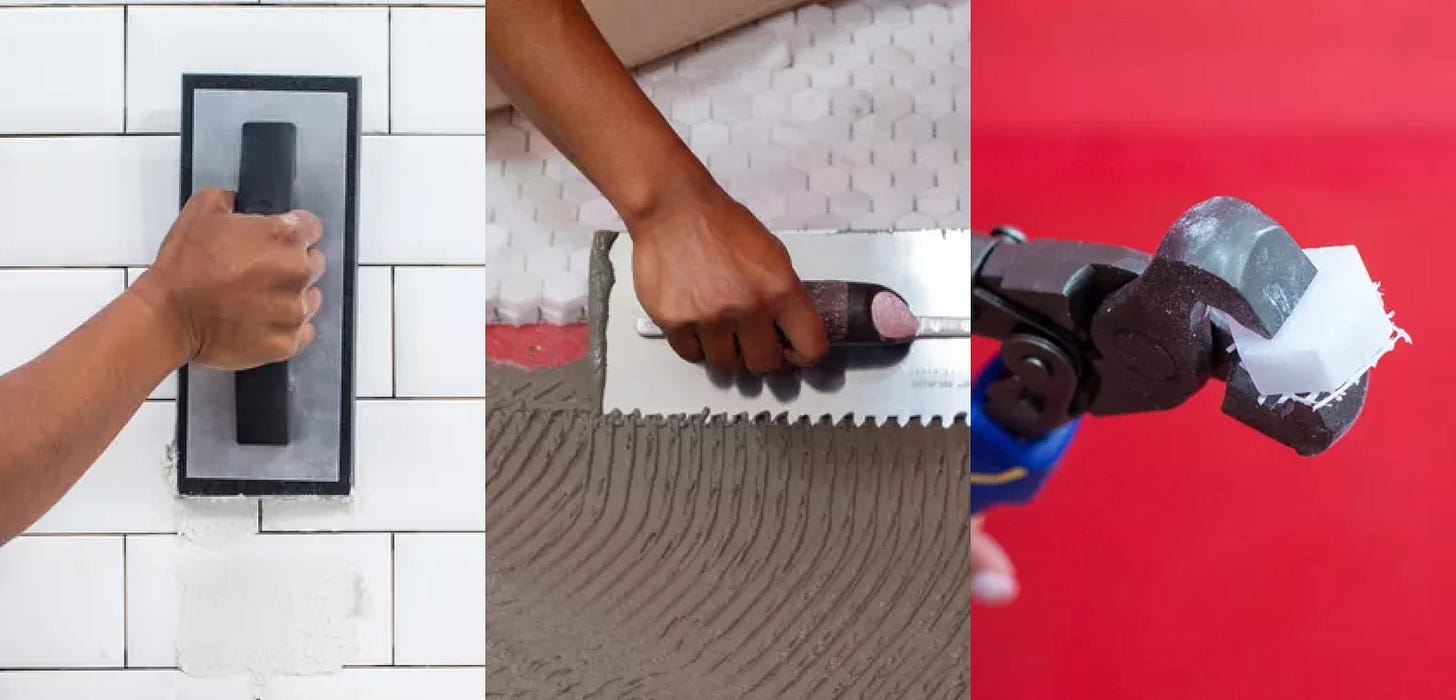Pipedream | Near-instant Deliveries
What if we could use a cheap, fast, invisible network of underground tubes to deliver goods in single-digit minutes?
When I first heard about 3D printing, my mind immediately jumped to a future where we could print anything we wanted in our home without having to drive to the store. Of course, that dream was short-lived as I realized I'd be 3D printing a bunch of parts over the course of days and then assembling the item myself. Not to mention, I'd still end up with a bunch of random 3D printed things that I only used once, shoved in a closet somewhere in my house.
3D printing might not be the answer, but perhaps the future I dreamed of isn't as far away as I thought. A future where we could get any item we needed near-instantaneously. Maybe I couldn't print the things I needed, but maybe I could get it delivered...
Let's dive in!
Welcome to The Glimpse
Join thousands of leaders from companies like Nike, Google, Uber, Coinbase, Twitter and Venmo as we learn how to build the future.
The Problem
In case it wasn't obvious, delivery logistics are incredibly difficult. If your delivery network isn't built out, the costs are astronomically high and, depending on the price, sometimes more than the item you're shipping.
🚙 Crowd sourcing?
Companies like Instacart first tried solving the last-mile delivery problem by crowdsourcing it. If every person with a car could be a delivery driver, you could scale your fleet without putting more cars on the road.
But even if your delivery network is well-developed, the last-mile costs tend to make up around 40% of the total shipping costs due to the inefficiencies of traversing a city. Rather than going 70mph on the interstate in a straight line, you're zigging and zagging through city streets at 35mph, stopping at traffic lights and getting stuck behind traffic.
🚁 Drones?
Companies like Amazon are trying to solve this problem with drones that can make deliveries "as the crow flies." If it can skip the traffic, speed limits and stop signs, deliveries can be made from warehouses on the outskirts of the city directly to its destination. But even drones are limited by speed, winds, precipitation and the FAA.
In any case, until delivery drones become ubiquitous, delivery services end up having to impose cart minimums or batch multiple orders with a shared destination in order to make a same-day delivery worth it. And for the companies like Amazon or Walmart who do offer free or affordable same-day delivery with no cart minimums, you can guarantee they're losing money on smaller purchases in order to maintain customer loyalty and satisfaction.
Despite the lingering problems, not all hope is lost. Maybe it's not a pipe dream after all.
Do y'all remember transport tubes from the 1960's TV show, The Jetsons?
Or the mail tubes from the post office?
Or perhaps the drive-thru tubes at your local bank?
What if we had that... but bigger?
There's a company called Pipedream that's working to build an underground network of tunnels for delivering physical goods. They’re not pneumatic tubes like at the bank drive-thru, but the idea is similar. These tunnels would connect public spaces, offices, retailers and, eventually, even homes allowing goods to be delivered lightning fast throughout the city.
The tubes they’re using are the same sort of PVC tubes that utility workers are already installing all around the modern city. Thanks to advancements in robotics and small motors, they've engineered a tube-dwelling courier robot that can travel at speeds up to 110mph on the straightaways, bringing physical goods from one portal to another with zero traffic, zero speed limits (other than those imposed by physics), zero stop lights, and zero weather concerns.
Consumerism? Or minimalism?
I can hear the haters already. Doesn't near-instant delivery just enable higher levels of consumerism and “I want it now” mentality?
The unfortunate truth is that, in the beginning it probably will. Cheap, instant deliveries? Immediate gratification? I think we can expect that a consumerist response will most likely be the case.
But in the long-run - and this is me just catching the vision for Pipedream - I believe cheap, fast, in-home deliveries will encourage a minimalist, possession-light way of life.
Hear me out.
Let's say you're planning to re-tile your shower and you need a grout float, a notched trowel and a pair of tile nippers.
Sure, you could run to Lowes or Home Depot and pick up a set. But now you've got these three tools that you'll probably never use after this project. They're probably not worth selling on Facebook marketplace and you don't want to throw away perfectly good tools. So they end up in your garage or a utility closet somewhere, taking up space and not being put to use.
Enter: Pipedream
With a nearly free, instant, invisible delivery network, there could be a number of options for you to get the tools need without the added burden of keeping them after you’re done.
Perhaps you could return those items to the retailer you bought it from.
Maybe you simply rent them from Lowes who has their own Pipedream Portal in their Tool Rental department.
Or maybe there's some sort of crowdsourcing option where you could then send the tools to someone across town who's working on their own tiling project.
In any case, Pipedream would enable you to get what you need when you needed it and then return it once you're finished.
The “Physical Cloud”
I like to explain this delivery network in terms of a digital network since a lot of you are technologists. A network becomes more valuable with every node added to it. Pipedream's tube network is exactly the same way. The more nodes it connects, the more options are available for the sending and receiving of physical goods.
At some point in the networks growth, it can begin to function similar to a blockchain network. In the same way that a blockchain distributes compute and ledger activity across each node in the network, a physical network like Pipedream can distribute the storage of goods across each node in the network (eg. other people's homes, retailers, warehouses).
This turns the community you live in into a "physical cloud" where you no longer have to store goods locally in your home. Rather, you can off-load your possessions to the "physical cloud" and then retrieve those items as needed.
Sure, there will always be things that you want to keep in your home - you won't off-load your laptop or your favorite backpack. But for the non-personal items like a screwdriver, a turkey baster, or a pool float, you can simply request them exactly when you need them and receive them in minutes. One less item to clutter up your home. The beauty is that when you have a need for that random item you'll probably only ever use once or twice, you don't have to drive to the store and buy it. You can just rent it for the day.
The Impact of Near-Instant Delivery
It's going to take some time before Pipedream's dream becomes less of a pipe dream and more of a reality. But as the network grows within a city, there are a number of second-order effects that we may start to see.
1. Fewer cars
When Uber, Instacart, DoorDash and other delivery services began popping up in the 2010's, the number of cars on the street at any given time exploded. In San Fransisco (which is an edge case, of course), the SF Traffic Authority estimated that vehicle density increased by ~50% after these crowd-sourced delivery companies were started.
Until we have tubes like the Jetsons, we'll assume that Uber will still be a thing for a while. But smaller items like food and groceries could be sent through Pipedream's network which would decrease the amount of delivery drivers on the street.
2. More affordable goods
Somewhere around 40% of the cost of shipping is tied up in last-mile delivery. If you could cut that cost down to pennies on the dollar, we could see a significant reduction in shipping costs - Pipedream wants to see shipping costs drop down to $1.
3. Less waste
In an ideal world, as the network reaches maturity, fewer items would be able to satiate the same or higher demand. Here's an example from Drew, Pipedream's co-founder.
"There are maybe 10 billion screwdrivers in the world sitting in drawers and toolboxes, a fraction of a percent being used. With hyperlogistics, 2-3 million screwdrivers being constantly distributed around can satiate demand for screwdrivers. This results in billions of screwdrivers that no longer needed to be produced, billions of pounds saved from landfills, & higher quality screwdrivers."
—Drew, Co-founder and COO of Pipedream
Now, I'm not so optimistic as to believe that the 10 billion screwdrivers in the world will magically be reduced down to 3 million and the rest be recycled and kept out of landfills. However, the principle holds true. For future goods being manufactured, the number of units needed to satisfy demand will go down, the number of unused items sitting in closets will go down and, hopefully as a result, the number of items that end up in landfills will go down.
That's the future that Pipedream is building.
I’ll catch ya next week.
—Jacob ✌️
❤️ Smash that heart!
If you enjoyed this article, smash that heart icon to show some love and don’t forget to share it with a friend!






